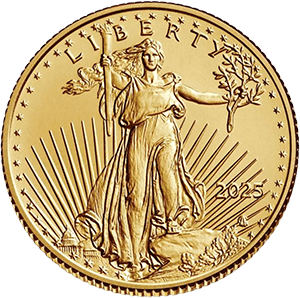The Timeless Role of Precious Metals
Every generation rediscovers what history never forgets: gold and silver are the ultimate forms of financial insurance.
From the fall of Rome to the 1970s oil shocks, and again during the 2008 crisis, these metals have protected wealth when currencies and markets falter. The reason is simple: they are not someone else’s liability.
Inflation and Currency Decay
Today’s inflationary backdrop isn’t transitory—it’s structural. Decades of deficit spending and monetary expansion have eroded the real value of currencies worldwide.
While consumer-price inflation appears “tamed” in headlines, the cumulative loss of purchasing power tells the truth: the U.S. dollar has lost over 98% of its value since the creation of the Federal Reserve in 1913.
Gold and silver, by contrast, have preserved value across centuries. A single ounce of gold still buys roughly the same amount of goods as it did 100 years ago—something no currency can claim.
Diversification and Correlation Benefits
Modern portfolio theory often underestimates precious metals. Yet statistically, gold maintains near-zero correlation to equities and negative correlation to bonds during crises. That makes it a true hedge, not just another asset class.
Silver complements this by adding both industrial demand and store-of-value appeal. While more volatile, silver tends to outperform gold in bull markets, amplifying the hedge’s upside potential.
Tangibility in an Over-Financialized World
Paper wealth depends on intermediaries—banks, brokers, algorithms. Physical metals bypass that system entirely. In times of systemic stress, an ounce of gold in hand is worth more than any digital balance dependent on clearinghouses or counterparties.
For investors seeking peace of mind, tangible bullion—held securely in vault or IRA—offers an anchor of certainty in an increasingly abstract economy.
Performance in Modern Crises
During the 2000–2002 dot-com collapse, gold rose 24% while the NASDAQ fell 78%.
In the 2008 global financial crisis, gold gained 6% while equities plunged over 40%.
And in 2020’s pandemic chaos, gold reached record highs above $2,000 per ounce as investors rushed to safety.
Every major disruption reaffirms the same truth: metals protect portfolios when paper assets fail.
The Modern Investor’s Opportunity
As central banks signal a return to easing, and global debt climbs to unprecedented levels, the long-term case for metals strengthens further.
Gold anchors a portfolio; silver adds torque. Together they form a dual-metal strategy: resilience (gold) plus opportunity (silver).
For retirement investors, a Precious Metals IRA offers tax-advantaged exposure to both—combining traditional wealth protection with modern portfolio integration.
Final Thought
Gold and silver are not speculative trades; they are strategic insurance. You don’t buy insurance because you expect disaster—you buy it because you understand cycles.
In every generation, those who allocate early enjoy stability when uncertainty rises. History continues to reward those who hold the real thing.


